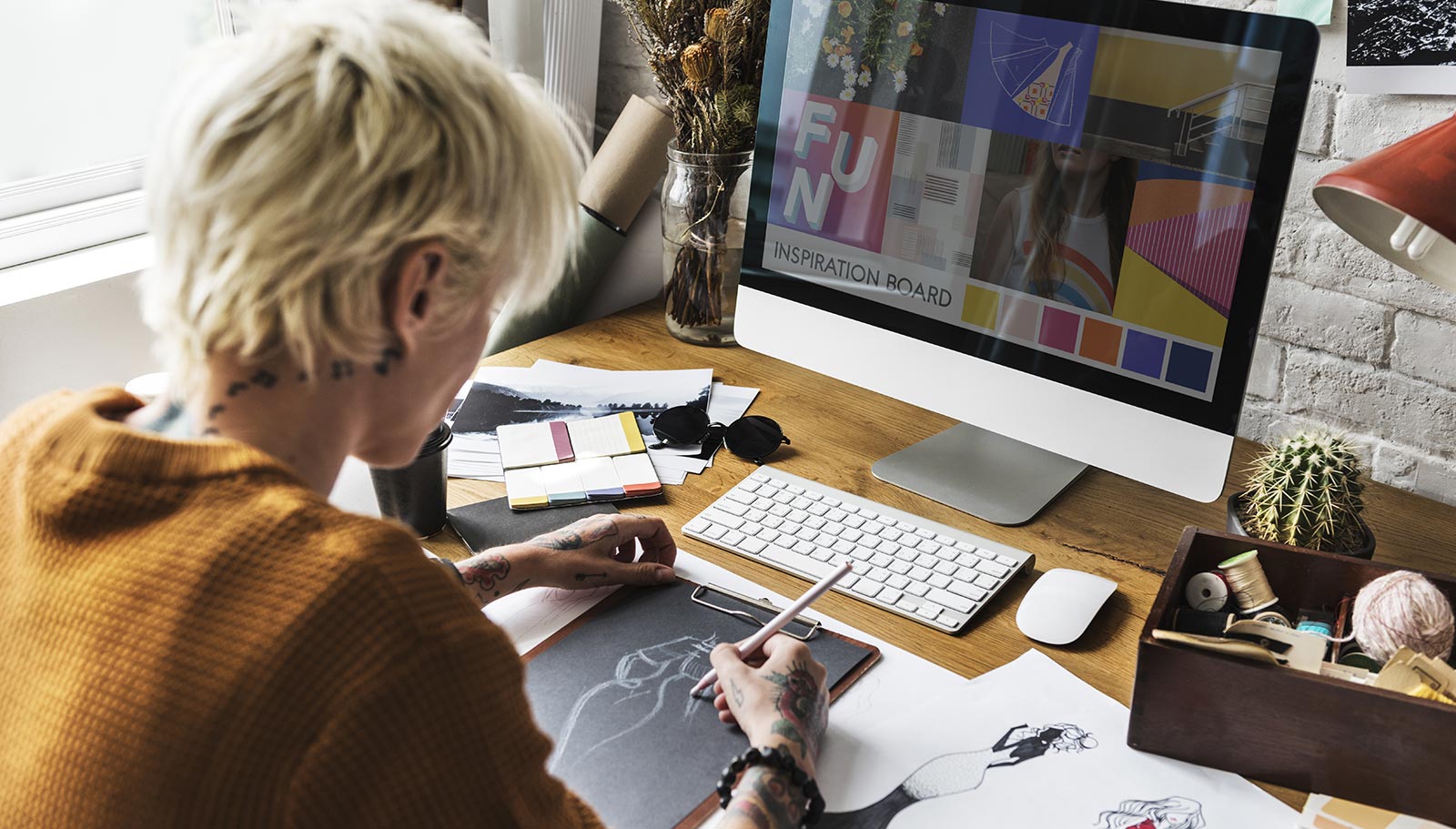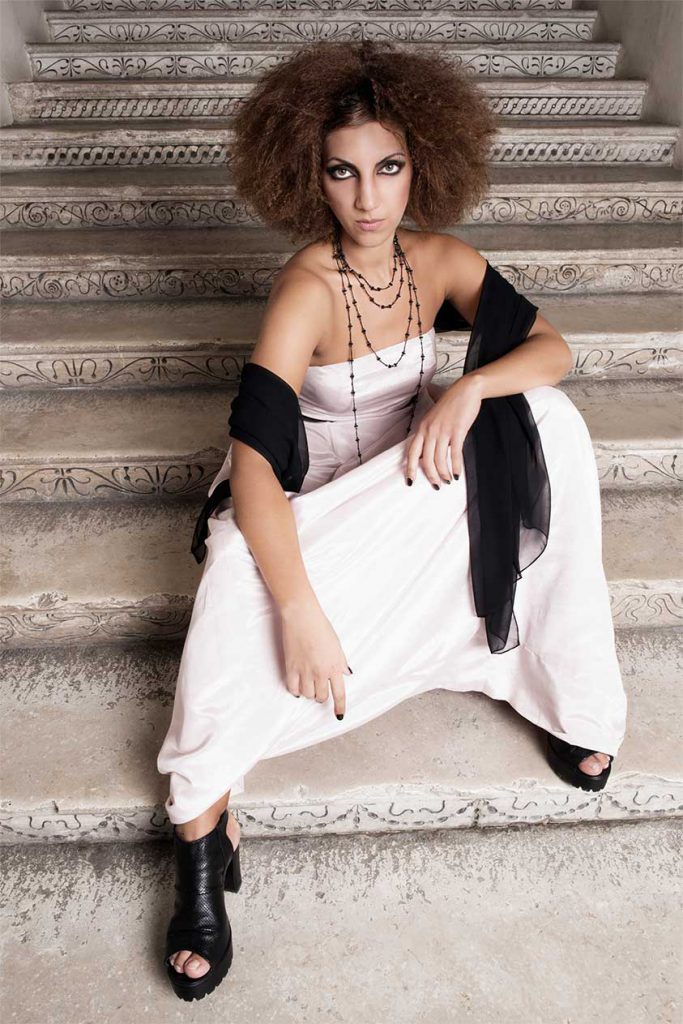course of
STYLIST
Our Fashion School transform the students in real artists, providing all the necessary tools to combine their individual fantasy with the general needs of the labour market. Becoming a stylist consist in spreading your own ideas and apply them to fashion. It’s necessary a deep knowledge of the fabrics, coloring techniques, tailoring and stylizing an idea, with the awareness that you can achieve it. Therefore our Stylist course includes in its program the following subjects: Croquis, Pattern Making and Tailoring.
A stylist become the master of the whole productive cycle, starting from the idea, and then through the croquis creates the finished product. It’s important that the professional has the right characteristics. such as the skill of working in a group of people, intuition, creativity and precision. He must meet the deadlines of the sample case and consider the qualitative and price standards imposed by the fashion companies.
The stylist is an artist and at the same time a fashion technician. Thanks to these characteristics he can work in different sectors and oversees the various processes in the fashion industry.
DURATION
2 years (20 months)
TOTAL HOURS
900 hours – 260 lessons
WEEKLY HOURS
5 hours per week in two lessons.
SIGNING UP
€ 300,00
MONTHLY PAYMENT
€ 300,00

DESIGN PROGRAM
- All kinds of basic skirt styles + patterns
- Basic classic pant + patterns.
- Basic feminine and masculine shirt.
- Various models of shirts from croquis with collars, sleeves and cuffs.
- Classic dress with darts.
- Various basic dresses from the traced, patterns and raglan styles.
- Classic jacket with man sleeves.
- Various jackets from croquis with different patterns.
- Classic heavy jacket and coat.
- Various styles from croquis for practising.
- Styles and tailoring of bridal gowns.
- Explanation and tailoring of different styles of collars, sleeves, pockets and finishing touches.
- Explanation of the utilization of the sewing machine + practice.
- Explanation of the typologies of fabric and cutting systems.
- Explanation and practice of tailoring with fittings
- Various basic styles, for infant and child.
- Basic menswear styles, including underwear, outwear and knitwear.
- Tailoring of suits.
- Underwear and swimwear styles.
- Practicing and development of models from croquis or from magazines.
- The completion of all types of styles.
- Explanation of the utilization of the sewing machine + practice.
- Study of styles accessories and equipment.
- Study of the industrial work system.
- Study of the background of commodities.
- Study of costume history.
- Study of the size chart.
- Study and competing of a technical file.
- Study of size development.
- Practicing of size development on all the basic styles.
- Background and utilization of Cad Lectra system.
FASHION DESIGNER PROGRAM
- Proportion and human anatomy.
- Drawing techniques.
- Basis of croquis.
- Study of measures and proportions.
- Drapery study.
- Colors technique.
- Study of the background of commodities.
- Coloring.
- Research of target and material.
- Stylization.
- Study of the background of commodities.
- Study of pattern making.
- Decoration.
- Background and utilization of some graphic software.
- Illustration.
- Fabric design.
- Collections.
- Study of the production cycle.
- Research method.
- Fashion accessories.
- Flat pattern.
- Technical file.
- Creation of a fashion collection of basic item of clothing, ready to wear and haute couture.
- Fashion collection of womenswear, menswear and childrenswear study.
- Study of collection’s accessories.
- Creation of a final book complete with research and materials.
- 4 Photoshop lessons.
DETAILS AND
MATERIAL
- Block notes.
- 2B-4B-6B Pencil.
- Stumps, 2 measures.
- Notepad.
- A4 paper sheets of 80/100 gr.
- Rubber.
- Pencil eraser.
- Block notes.
- Pen.
- Invisible adhesive tape.
- Designer papers sheets.
- Set square with 90 degrees angles.
- 60 cm ruler.
- Pins.
- Basting thread.
- Putty rubber.
- Little set square.
- Little ruler.
- Drawings portfolio.
- Watercolor pencils.
- Pantones.
- The necessery material for the researches and book will be indicated during the course.
- Paper scissors.
- Sewing scissors.
- Tape measure.
- Thimble.
- Tailor’s chalk.
- Needles of various measures.
- The material for samples development will be described during the course.


Utilizza il form qui vicino per chiedere maggiori informazioni riguardo i nostri corsi o chiama i seguenti numeri:
Sede Ferrara
Tel.: +39 0532 1730817 – Cell.: +39 340 2633150
Sede Rovigo
Tel.: +39 0425 590305 – Cell.: +39 340 2633150















